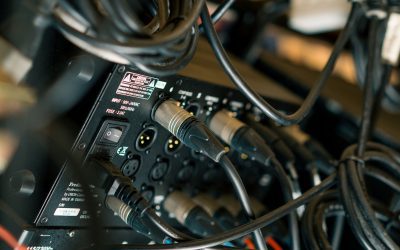Amateur radio operators rely on clear audio quality to ensure smooth communication. However, various audio issues can disrupt transmissions, causing frustration and inefficiency. Whether you’re experiencing weak signals, distortion, or background noise, understanding and troubleshooting these common audio problems can significantly improve your setup’s performance. This guide will explore the most frequent audio issues in amateur radio and provide practical solutions to resolve them.
Common Audio Issues in Amateur Radio
1. Distorted Audio Output
Symptoms:
- Audio sounds garbled, muffled, or overly modulated.
- Reports from other operators indicate your signal is difficult to understand.
Causes:
- Overdriven microphone gain.
- Faulty microphone or cable.
- Improper modulation settings.
Solutions:
- Adjust Microphone Gain: Start with a low gain setting and gradually increase it while monitoring the signal on another receiver or through an online SDR.
- Check Microphone and Cables: Swap out the microphone and cables to determine if they are the source of the problem.
- Proper Modulation Settings: Ensure the radio’s modulation is set correctly for the mode you are operating (AM, FM, SSB, etc.).
2. Background Noise or RF Interference
Symptoms:
- High noise levels in the transmitted audio.
- Unwanted hum or buzzing sounds.
Causes:
- Electrical interference from household appliances or power lines.
- Poor grounding or shielding.
- RF feedback from high-powered transmissions.
Solutions:
- Identify Interference Sources: Turn off nearby electronic devices one by one to identify the source of interference.
- Improve Grounding: Ensure your station is properly grounded to reduce RF interference.
- Use Ferrite Chokes: Install ferrite chokes on power cords and microphone cables to minimize RF feedback.
- Relocate Equipment: Increase the distance between the radio, power supply, and computer to reduce interference.
3. Low Audio Output
Symptoms:
- Other operators report that your signal is weak.
- Difficulty being heard in a net or pileup.
Causes:
- Low microphone gain settings.
- Faulty microphone.
- Poor antenna efficiency or transmission issues.
Solutions:
- Increase Microphone Gain: Adjust the gain to an optimal level, ensuring a clear but not overdriven signal.
- Test with a Different Microphone: If available, try using a different microphone to determine if the issue is hardware-related.
- Check Antenna and Transmission Line: Ensure your antenna system is functioning correctly and that SWR levels are within acceptable limits.
4. Echo or Feedback in Transmissions
Symptoms:
- Your transmitted signal includes an unwanted echo or looping effect.
Causes:
- RF feedback entering the audio chain.
- Incorrect settings on digital modes.
- Open microphones picking up external sound.
Solutions:
- Use Shielded Cables: Replace unshielded audio cables with properly shielded ones.
- Adjust Digital Mode Settings: Ensure VOX and audio processing settings are correctly configured.
- Lower Microphone Gain: High gain can sometimes cause audio feedback.
- Reposition the Microphone: Move it away from speakers or other noise sources.
5. Hum or Buzzing Sounds
Symptoms:
- A persistent low-frequency hum or high-pitched buzz in the transmission.
Causes:
- Ground loops in the power supply.
- AC interference from household wiring or fluorescent lights.
- Poor-quality power adapters.
Solutions:
- Check Grounding: Ensure a common ground connection between all station equipment.
- Use a Different Power Source: Try using a battery or a different power supply to see if the noise disappears.
- Eliminate Ground Loops: Use isolation transformers or ground loop isolators to reduce hum.
6. Poor Audio in Digital Modes
Symptoms:
- Weak or distorted digital transmissions (PSK31, FT8, RTTY, etc.).
- Decoding errors when receiving digital signals.
Causes:
- Incorrect audio level settings.
- Interference from other equipment.
- Software configuration issues.
Solutions:
- Adjust Audio Levels: Ensure proper input and output levels in both the radio and software settings.
- Use a Dedicated Sound Card Interface: A high-quality external sound card interface can improve digital mode performance.
- Check Cables and Connectors: Loose or damaged cables can introduce noise and signal degradation.
7. Unintended Voice-Activated Transmissions (VOX Issues)
Symptoms:
- Your radio transmits unexpectedly when not speaking.
Causes:
- Background noise triggering VOX.
- VOX sensitivity set too high.
Solutions:
- Lower VOX Sensitivity: Adjust the VOX threshold to prevent activation from ambient noise.
- Use Push-to-Talk (PTT) Instead: If VOX issues persist, consider switching to manual PTT operation.
Preventive Measures for Maintaining Audio Quality
To avoid common audio issues in amateur radio, consider the following best practices:
-
Regularly Inspect Equipment: Check cables, connectors, and microphones for wear and tear.
-
Maintain Proper Grounding: Ensure your radio setup is well-grounded to prevent unwanted noise and interference.
-
Optimize Operating Environment: Keep your shack free from excessive electronic noise sources.
-
Use High-Quality Accessories: Invest in quality microphones, headphones, and audio interfaces for better performance.
-
Monitor Your Signal: Use an SDR or a second receiver to listen to your transmissions and make necessary adjustments.
Audio quality is a critical factor in amateur radio communication. By identifying and troubleshooting common audio issues, operators can enhance their station’s performance and ensure clear, effective transmissions. Whether it’s adjusting microphone settings, eliminating interference, or improving grounding, these solutions will help you maintain optimal audio quality in your amateur radio setup.




